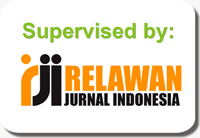The Utilization of Deep Learning in Forecasting The Inflation Rate of Education Costs in Malang
DOI:
https://doi.org/10.31961/eltikom.v7i1.729Keywords:
deep learning, long short-term memory, education cost, inflationAbstract
The public needs information about the predicted inflation rate for education costs to manage family finances and prepare education funds. This information is also beneficial for the government to create policies in education. Malang is one of the educational cities in Indonesia, but research on the prediction of the inflation rate of education costs in the city still needs to be made available. Besides, the researchers have yet to find previous studies on forecasting that used the specific inflation rate for education costs in Indonesia by applying the Deep Learning method, especially those using the Consumer Price Index (CPI) data for the Education Expenditure Group. This research aims to develop a model to forecast the inflation of education costs in Malang using the Deep Learning Method. This research was conducted using Consumer Price Index (CPI) data for the Education Expenditure Group in Malang during 1996-2021s taken from the Central Bureau of Statistics (BPS) Malang. The forecasting method used is the Long and Short-Term Memory (LSTM) method, which is a development of the Recurrent Neural Network (RNN). The results showed that it achieved the best accuracy by a model with one hidden layer and four hidden nodes, namely MAPE=2.8765% and RMSE=8.37.
Downloads
References
M. R. Rita and B. Santoso, “Literasi keuangan dan perencanaan keuangan pada dana pendidikan anak,†J. Ekon., vol. 20, no. 2, pp. 212–227, 2015.
C. Mulhern, R. R. Spies, and D. D. Wu, “The Effects of Rising Student Costs in Higher Education Evidence from Public Institutions in Virginia,†2015.
M. N. Hapsari and T. D. Hascaryani, “Kajian Respon Permintaan Pendidikan Tinggi Terhadap Kenaikan Biaya Kuliah Dan Pendapatan Masyarakat Di Kota Malang (Studi Kasus Pada Universitas Brawijaya Dan Universitas Negeri Malang),†J. Ilm. Mhs. FEB, vol. 1, no. 1, 2012.
Badan Pusat Statistik Kota Malang, Kota Malang Dalam Angka 2021. Malang, 2021.
C. M. Fajar and D. Mulyanti, “Meningkatkan taraf perekonomian dan kesejahteraan melalui perencanaan investasi pendidikan,†J. Abdimas BSI J. Pengabdi. Kpd. Masy., vol. 2, no. 1, pp. 89–95, 2019.
J. Kustiandi and D. Rachmawati, “Kajian Kesejahteraan Sosial, Pendidikan dan Ekonomi Masyarakat di Kota Malang,†OPORTUNITAS J. Pendidik. Ekon. Manajemen, Kewirausahaan dan Kop., vol. 1, no. 01, pp. 7–14, 2020.
P. Bajaj, R. Ray, S. Shedge, S. Vidhate, and N. Shardoor, “Sales Prediction Using Machine Learning Algorithms,†Int. Res. J. Eng. Technol., vol. 7, no. 06, 2020.
Y. Ensafi, S. H. Amin, G. Zhang, and B. Shah, “Time-series forecasting of seasonal items sales using machine learning–A comparative analysis,†Int. J. Inf. Manag. Data Insights, vol. 2, no. 1, p. 100058, 2022.
C. Yang and S. Guo, “Inflation prediction method based on deep learning,†Comput. Intell. Neurosci., vol. 2021, 2021.
A. N. Alfiyatin, W. F. Mahmudy, C. F. Ananda, and Y. P. Anggodo, “Penerapan Extreme Learning Machine (ELM) untuk Peramalan Laju Inflasi di Indonesia,†J. Teknol. Inf. dan Ilmu Komput., vol. 6, no. 2, 2019.
S. Wheelwright, S. Makridakis, and R. J. Hyndman, Forecasting: methods and applications. John Wiley & Sons, 1998.
M. Firdaus, Aplikasi Ekonometrika untuk Data Panel dan Time Series. Kota Bogor: PT Penerbit IPB Press, 2019.
A. Khumaidi, R. Raafi’udin, and I. P. Solihin, “Pengujian Algoritma Long Short Term Memory untuk Prediksi Kualitas Udara dan Suhu Kota Bandung,†J. Telemat., vol. 15, no. 1, pp. 13–18, 2020.
J. Korstanje, Advanced forecasting with Python. Springer, 2021.
Y. Hua, Z. Zhao, R. Li, X. Chen, Z. Liu, and H. Zhang, “Deep learning with long short-term memory for time series prediction,†IEEE Commun. Mag., vol. 57, no. 6, pp. 114–119, 2019.
K. Kawakami, “Supervised sequence labelling with recurrent neural networks.†Technical University of Munich, 2008.
L. Wiranda and M. Sadikin, “Penerapan Long Short Term Memory Pada Data Time Series Untuk Memprediksi Penjualan Produk Pt. Metiska Farma,†J. Nas. Pendidik. Tek. Inform. JANAPATI, vol. 8, no. 3, pp. 184–196, 2019.
A. Khumaidi and I. A. Nirmala, Algoritma Long Short Term Memory dengan Hyperparameter Tuning: Prediksi Penjualan Produk. deepublish, 2022.
P.-C. Chang, Y.-W. Wang, and C.-H. Liu, “The development of a weighted evolving fuzzy neural network for PCB sales forecasting,†Expert Syst. Appl., vol. 32, no. 1, pp. 86–96, 2007.
B. Guha and G. Bandyopadhyay, “Gold price forecasting using ARIMA model,†J. Adv. Manag. Sci., vol. 4, no. 2, 2016.
L. P. Malau, Y. R. Edward, S. Faris, and M. R. Sianipar, “The Effect of Education Costs, Promotions, And Facilities on Students’ Decisions to Choose to Learn at the Faculty of Medicine, Prima Indonesia University Through Attitude as a Moderating Variable,†Int. J. Res. Rev., vol. 9, no. 8, pp. 641–649, 2022.
I. Duchesne and W. Nonneman, “The demand for higher education in Belgium,†Econ. Educ. Rev., vol. 17, no. 2, pp. 211–218, 1998.
Downloads
Published
How to Cite
Issue
Section
License
Copyright (c) 2023 Jurnal ELTIKOM : Jurnal Teknik Elektro, Teknologi Informasi dan Komputer

This work is licensed under a Creative Commons Attribution-NoDerivatives 4.0 International License.
All accepted papers will be published under a Creative Commons Attribution 4.0 International (CC BY 4.0) License. Authors retain copyright and grant the journal right of first publication. CC-BY Licenced means lets others to Share (copy and redistribute the material in any medium or format) and Adapt (remix, transform, and build upon the material for any purpose, even commercially).




